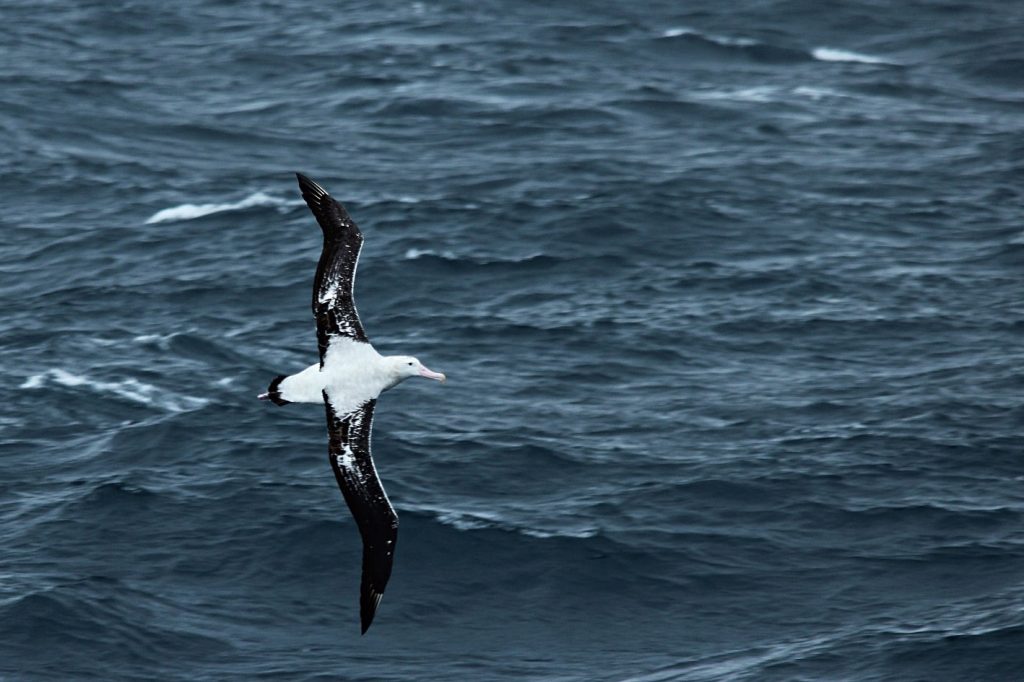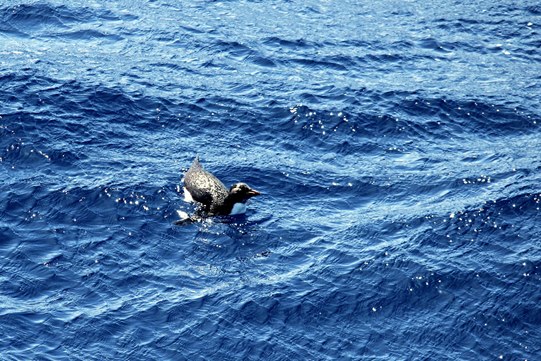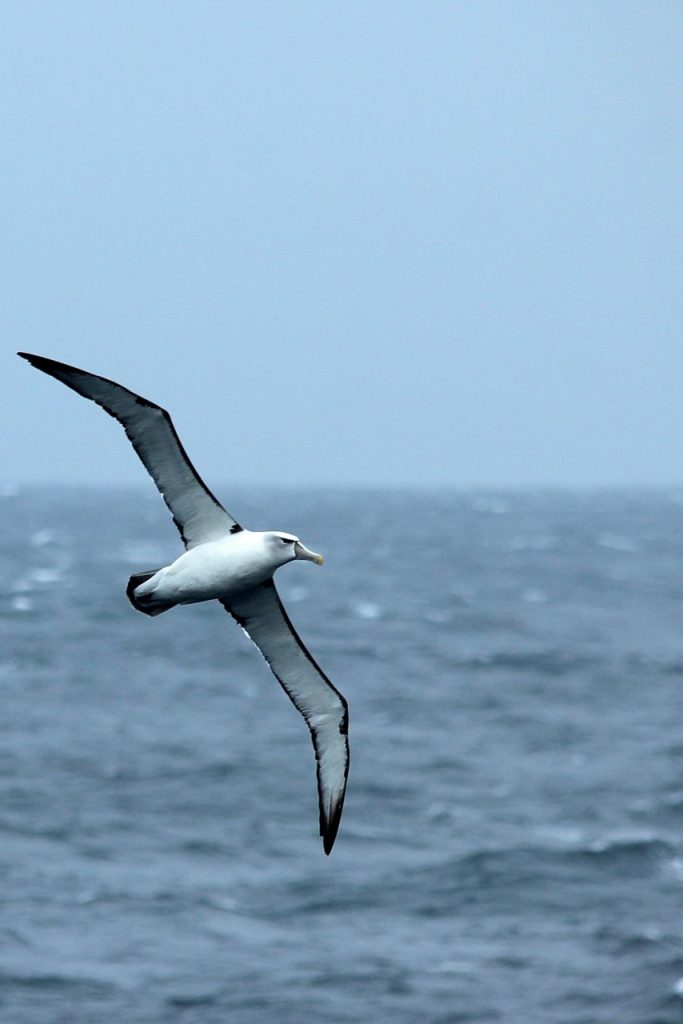Our seabird entourage
David Green

One of the many wandering albatrosses that visited the ship over the course of the voyage. 📷 David Green
Over the past six weeks we’ve all enjoyed our daily forays outdoors, braving the elements for some fresh air. For most (me included), there is the ever-present hope of a glimpsed fin or distant tell-tale puff betraying a whale. There really is something special about watching the silhouette of a Minke as it glides past, submerged, but tantalisingly close to the surface. As expected, each cetacean sighting has been accompanied by excited commotion and a frantic runaround to all corners of the ship as the animals pop up here and there, seemingly at random.
Species list for the trip
Sooty shearwater
White-headed petrel
Soft-plumaged petrel
Antarctic prion
Fairy prion
White-chinned petrel
Short-tailed shearwater
Wandering albatross
Shy albatross
Black-browed albatross
Sooty albatross
Light-mantled albatross
Southern royal albatross
Northern giant petrel
Grey petrel
Black-bellied storm petrel
Wilson’s storm petrel
Eastern rockhopper penguin
However, our whale sightings have been sporadic with days going by without a trace. It’s during these dry spells that I’ve gone on deck armed with my binoculars and camera to scan the white-capped waves for the brown and white flashes of seabirds. Unlike whale-watching, birding never fails to deliver. Winged shapes materialise almost miraculously out of the deep-blue backdrop with a single cursory sweep through the lens. For each bird that I lock eyes on, the birder in me runs through potential candidates to clinch an ID. All the while the bird wheels over wave crests and disappears into troughs.
Seabirds here come in a plethora of sizes and shapes; from the massive wandering albatross with endless wings stretching more than three metres, to the diminutive, fluttering Wilson’s storm petrel weighing less than a slice of bread. Matching this size range, each group displays its own unique flying style. Some species, like albatrosses and the larger petrels draw long, invisible curves and arcs across the sky in what could be an elaborate tapestry. Others, like the shearwaters, seem to be following a line that only they can see, motoring along with beating wings, a foot or so above the surface. These characteristic flight patterns are often unique enough to identify the species. In fact, field guides go so far as to summarise each species’ flying style in a few words; perhaps rather callously referring to some as “light and buoyant” – the elegant sooty albatross, while labelling others as “heavy and cumbersome” – a rather unfair description of giant-petrels.
Despite what we might say about their flying prowess, oceanic seabirds are remarkable travellers. There are few who haven’t heard of the endeavours of albatrosses covering vast tracts of seemingly featureless ocean in search of their next meal. But even more fascinating to me are all the smaller species that we’ve seen along the way. It’s mind-blowing to think that the short-tailed and sooty shearwaters (<1 kg), spotted on the daily over the past few weeks were flying around the Alaskan Arctic just a few months ago – a roundtrip migration of up to 64 000 km! No less impressive are the black-bellied storm petrels that hover and dance over the water alongside the ship, roughly 1000 km from their nearest breeding colony.
One can’t help but ask what these birds are doing here in such a remote, wind-lashed, inhospitable corner of the world. But they are supremely adapted to this place. An incredibly keen sense of smell allows them to detect the faint scent of phytoplankton (and in association, their prey) being grazed up to 10 km away. Their flight has been optimised over the ages to harness the unrelenting winds to their advantage, allowing them to conserve energy. Anyone can see this when watching them flying in a gale. They tear through the air; wings held taut with feathers ruffling under the pressure as they whip their body around effortlessly. I marvel that when conditions get bad enough to bring us indoors, they continue to fly.
It drives home that this is their environment, not ours. So, perhaps instead they should be asking us what we are doing here?

A young black-browed albatross glaring at me as it sweeps past the ship. 📷 David Green 
A juvenile eastern rockhopper penguin that made a brief, but loud appearance at our 55oS site. 📷 David Green 
A shy albatross and white-chinned petrel gracefully soaring through some wild weather. 📷 David Green 
Close-up view of an adult shy albatross. 📷 David Green 
A white-headed petrel, one of the smaller species frequently seen dipping and soaring past the ship. 📷 David Green



